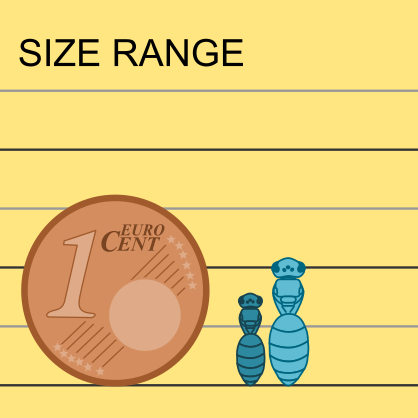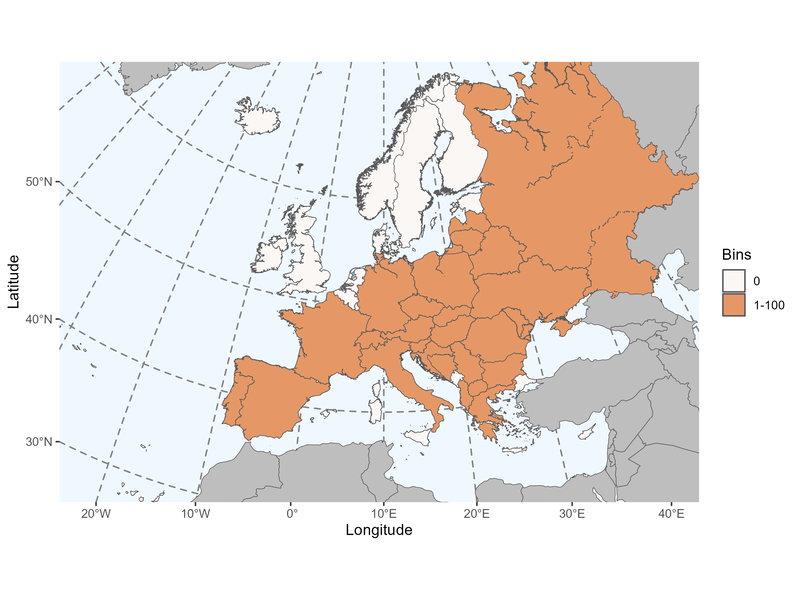Author: Illiger, 1805
|
Type species: Andrena spiralis Olivier, 1789 = Eucera curvicornis Scopoli, 1770, monobasic.
|
Clade: Anthophila
Family: Halictidae Subfamily: Rophitinae Tribe: Rophitini |
|
Distinctive traits
|
Pictures of distinctive traits.
|
Morphologically close genera and how to distinguish them
Dufourea, Rophites and Rophitoides have 2 submarginal cells.
Halictus and Lasioglossum have longer clypeus and subantennal space. The basal vein is dinstinctly curved.
- Systropha - Dufourea, Rophites and Rophitoides
Dufourea, Rophites and Rophitoides have 2 submarginal cells.
- Systropha - Halictus, Lasioglossum
Halictus and Lasioglossum have longer clypeus and subantennal space. The basal vein is dinstinctly curved.
General comments on Systropha species identification
Sternites and genitalia should be visible for identification.
The two european species can be distinguished by the vertex length of the females (short in S. curvicornis), and the shape of teeth of the male's sternite 2 and 3 (pointed in S. curvicornis).
Sternites and genitalia should be visible for identification.
The two european species can be distinguished by the vertex length of the females (short in S. curvicornis), and the shape of teeth of the male's sternite 2 and 3 (pointed in S. curvicornis).
Sorry, but the species identification tool is not yet available for Systropha.
Please check the reference(s) below for traditional keys.
Please check the reference(s) below for traditional keys.
List of the 3 Systropha species found in Europe (Ghisbain et al. 2023):
Systropha curvicornis (Scopoli, 1770)
Systropha grandimargo Pérez, 1905
Systropha planidens Giraud, 1861
Systropha curvicornis (Scopoli, 1770)
Systropha grandimargo Pérez, 1905
Systropha planidens Giraud, 1861
References with identification keys for some of the species:
- Amiet F., Müller A. & Neumeyer R.,1999. Apidae 2: Colletes, Dufourea, Hylaeus, Nomia, Nomioides, Rhophitoides, Rophites, Sphecodes, Systropha (Fauna Helvetica 4). Centre suisse de cartographie de la faune (CSCF), Neuchâtel, 239 pp.
- Pesenko, Y.A., Banaszak, J., Radchenko, V.G. & Cierzniak, T. 2000. Bees of the family Halictidae (excluding Sphecodes) of Poland. Bydgoszcz. 348pp.
- Patiny, S. & D. Michez, 2006. Phylogenetic analysis of the Systropha Illiger 1806 (Hymenoptera: Apoidea: Halictidae) and description of a new subgenus. Annales de la Société entomologique de France (n.s.), 42 (1): 27-44.
Page contributors:
You noticed a mistake? You have a suggestion to improve this page?
Don't keep it to yourself, contact us and become a contributor to IDmyBee!
- Adrien Perrard (Dec. 2023)
- Adrien Perrard (Dec. 2019)
You noticed a mistake? You have a suggestion to improve this page?
Don't keep it to yourself, contact us and become a contributor to IDmyBee!
References used to write this page:
- Ghisbain, G., Rosa, P., Bogusch, P., Flaminio, S., Le Divelec, R., Dorchin, A., Kasparek, M., Kuhlmann, M., Litman, J., Mignot, M., Müller, A., Praz, C., Radchenko, V.G., Rasmont, P., Risch, S., Roberts, S.P.M., Smit, J., Wood, T.J., Michez, D. & Reverte, S. (2023). The new annotated checklist of the wild bees of Europe (Hymenoptera: Anthophila). Zootaxa, 5327(1), 1-147.
- Michener, C.D. 2007. The Bees of the World, 2nd Edition. The John Hopkins University Press, Baltimore.
- Michez D., Rasmont P., Terzo, M., Vereecken, N. 2019. Abeilles d'Europes. Hymenoptères d'Europes, Volume 1. N.A.P. Editions.
- Nieto, A., Roberts, S. P., Kemp, J., Rasmont, P., Kuhlmann, M., García Criado, M., ... & Michez, D. 2014. European red list of bees. Luxembourg: Publication Office of the European Union, 98.
- Rasmont, P., Devalez, Jelle, Pauly, A., Michez, D. & Radchenko, V.G. 2017. Addition to the checklist of IUCN European wild bees (Hymenoptera: Apoidea). Annales de la Société entomologique de France 53: 17-32.



